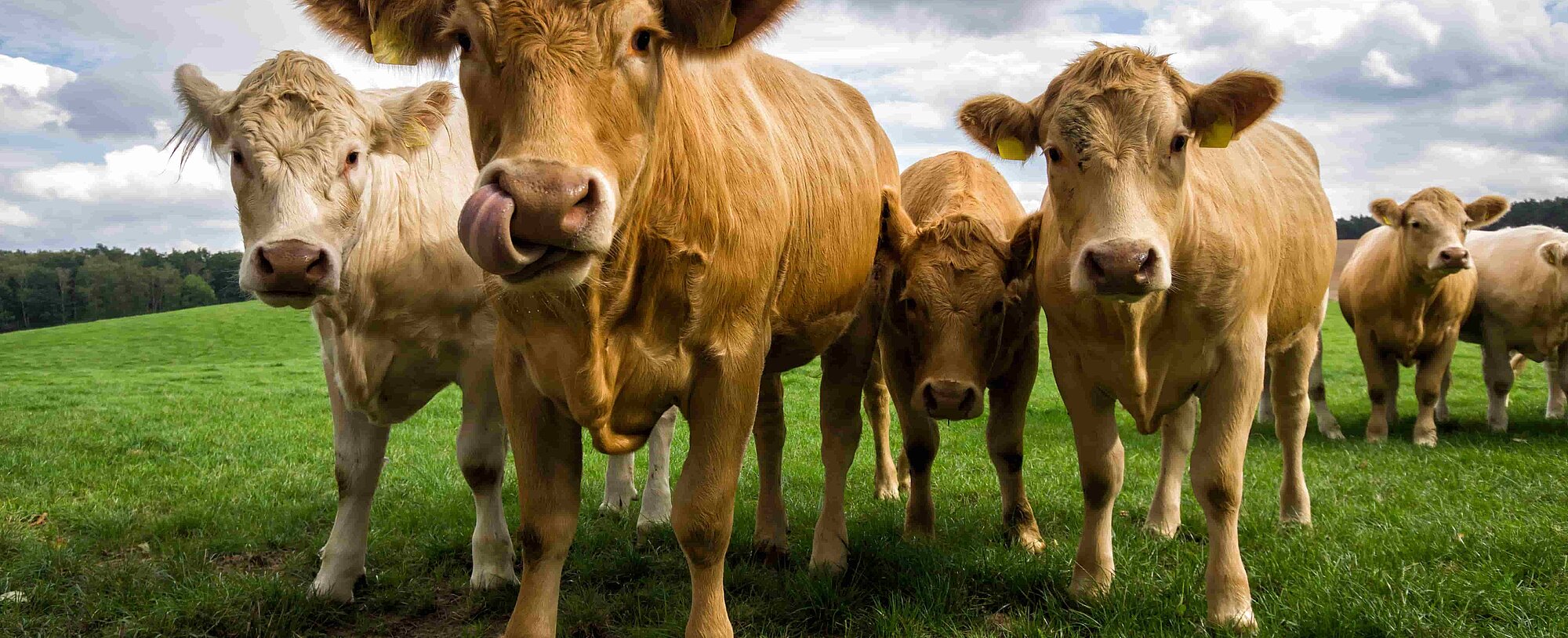Phosphorus, an essential element, can make up as much as one percent of an animal's body weight. The majority of the body's phosphorus is found in the skeleton, but the substance also plays an important role in the acid-alkaline balance, is part of both the DNA and the energy source adenosine triphosphate, and is involved in numerous other metabolic reactions.
Inorganic phosphates and phytases instead of mineral phosphorus
However, phosphorus is not fully digestible for non-ruminant animals, as two thirds of the phosphorus is bound to phytic acid in monogastric diets. That is why, more than 20 years ago, BASF led the way in introducing Natuphos® to the market – a product that has now become the standard for farmers thanks to an ingenious idea: In order to satisfy the animal's phosphorus needs, beside inorganic phosphates also phytases are added to the diet of poultry and pigs. The phytase enzyme makes it possible to significantly reduce the share of mineral phosphorus in the animal feed. Instead, the phytin-bound phosphorus is released by the enzyme so that poultry and pigs can digest it. Another advantage is that phytase can also liberate other minerals and nutrients that are bound to phytic acid, including calcium, magnesium, starch and amino acids.
Improved nutritional value thanks to xylanase and glucanase
Today, Natuphos® offers even more. Along with the phytase, the Natuphos® 5000 Combi G combination product also contains two high-performance non-starch polysaccharides (NSP) enzymes from the BASF product Natugrain® TS: xylanase and glucanase. This eliminates the negative effects of the NSP, such as reduced performance and nutrient digestibility. These would otherwise be a problem in diets rich in grains such as wheat, barley or rye. “Natuphos® 5000 G combines the positive characteristics of two products and three special enzymes in one product,” says Alfred Schülein, Account Manager Animal Nutrition at BTC.
Less space needed, plus environmental benefits
A wide range of advantages result from this combined formulation. Only one product is required, taking up less space in the warehouse. The combination of the three enzymes not only makes handling easier, but also reduces the environmental impact in a sustainable way. An improved feed conversion overall is paired with a significantly lower phosphorus excretion. In addition, the NSP hydrolizing enzymes result in improved hygienic conditions in the fattening facility, because the firmer consistency of the excrement keeps the bedding drier.
EU approval for fattening pigs
The fact that Natugrain® TS was approved for use in fattening pigs by the EU in January 2014 makes Natuphos® 5000 Combi G even more attractive. Natugrain® TS had already been approved as a feed supplement for weaned piglets and various poultry species. Multiple long-term studies documented that a dose of 100 g Natugrain® TS per ton of feed (560 TXU and 250 TGU/kg feed) resulted in a significant improvement in the performance of fattening pigs. Natuphos® 5000 Combi G therefore offers a tremendous range of options for pig fattening farms.
The Natuphos® 5000 G enzyme combination contains:
- Phytase (min. 5000 FTU 3-phytase per gram)
- Xylanase (min. 5600 TXU endo-1,4-beta-xylanase per gram)
- Glucanase (min. 2500 TGU endo-1,4-beta-glucanase per gram)


